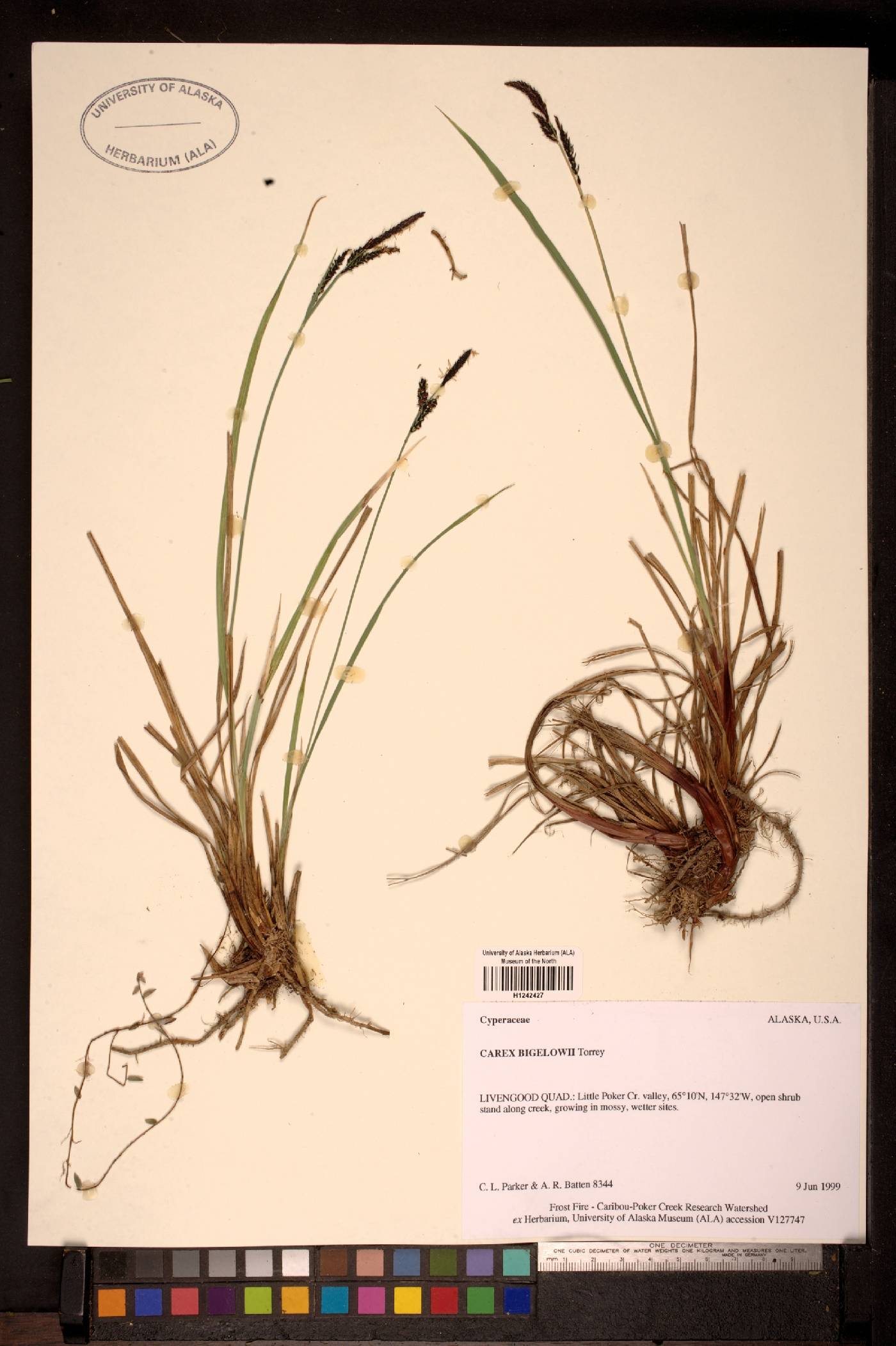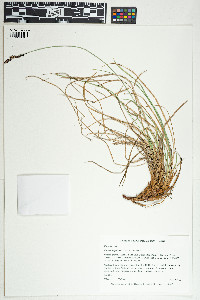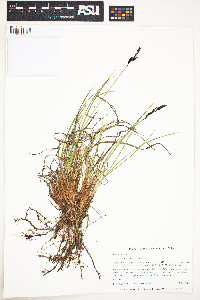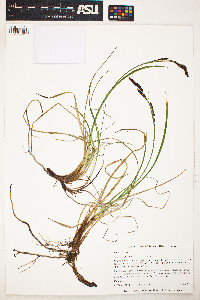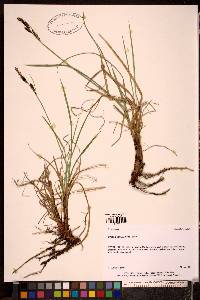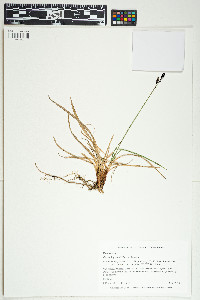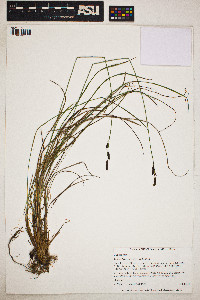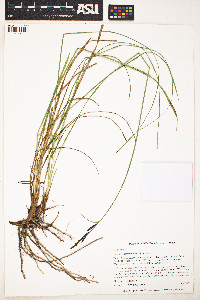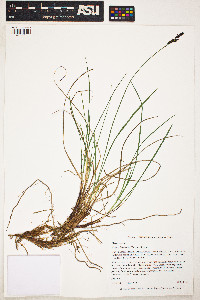|
|
|
|
Family: Cyperaceae
Bigelow's sedge
[Carex bigelowii subsp. hyperborea (Drejer) Böcher, moreCarex consimilis Holm] |
Plants cespitose or not. Culms acutely angled, 10-50 cm, scabrous. Leaves: sheaths of proximal leaves glabrous, fronts lacking spots and veins, apex concave; blades 1.5-4 mm wide. Inflorescences: proximal bract setaceous or foliaceous, shorter than inflorescence, 0.5-3 mm wide. Spikes erect; proximal (1-)2-3 spikes pistillate, 0.7-3 cm × 3-4 mm, base cuneate or attenuate; terminal 1(-2) spikes staminate. Pistillate scales black, equaling or shorter than perigynia, apex obtuse or acute, awnless. Perigynia ascending, green, spotted purple-black or mottled on apical 1/2, veinless, somewhat flattened, tightly enclosing the achenes, ellipsoid, 1.5-3.5 × 0.9-2 mm, dull, apex rounded or acute, papillose; stipe to 0.45 mm; beak 0-0.2(-1) mm. Achenes not constricted, dull. Carex bigelowii is a highly variable, circumpolar species complex with four subspecies recognized in Europe (A. O. Chater 1980). The North American populations can be divided into an eastern and a western taxon, which cannot always be distinguished morphologically. They are recognized as two subspecies of a widely ranging complex for this treatment. Carex bigelowii appears to be closely related to the western montane C. scopulorum; it is distinguished by its narrower leaves and narrower, ellipsoid perigynia. Tall plants of C. bigelowii may be confused with C. aquatilis (especially C. aquatilis var. minor) and can be distinguished by the short bracts, hypostomic leaves, and dull achenes of C. bigelowii. These two taxa have been reported to hybridize (M. G. Duman and S. D. Kryszczuk 1958) and have been artificially hybridized by J. S. Faulkner (1973), who found that these two species were very closely related.
Stems erect, 1-4 dm, solitary or few together from stout rhizomes, surrounded by the dried-up lf-bases of the previous year, phyllopodic; main lvs 2-6 mm wide; terminal spike staminate, 0.5-2 cm, usually long-pedunculate; pistillate spikes 2 or 3, cylindric, 0.5-3.5 cm, erect, the lower short-peduncled, the upper sessile or nearly so; bracts sheathless, the lowest usually shorter than the infl, the upper much smaller; pistillate scales elliptic to obovate, obtuse, about as long and wide as the perigynia and concealing them, dark brown throughout or with a very narrow pale midvein; perigynia pale green, usually strongly suffused with purple or even wholly purple, ovate to obovate, biconvex, 2.1-3.8 mm, rounded or obtuse at the summit, minutely apiculate, 2-ribbed, otherwise nerveless; achene lenticular, nearly filling the perigynium; 2n 76-80. Rocky ledges and mt. meadows; circumboreal, s. in our range to the higher mts. of N. Engl. and N.Y. (C. concolor, perhaps misapplied) Gleason, Henry A. & Cronquist, Arthur J. 1991. Manual of vascular plants of northeastern United States and adjacent Canada. lxxv + 910 pp. ©The New York Botanical Garden. All rights reserved. Used by permission. |


